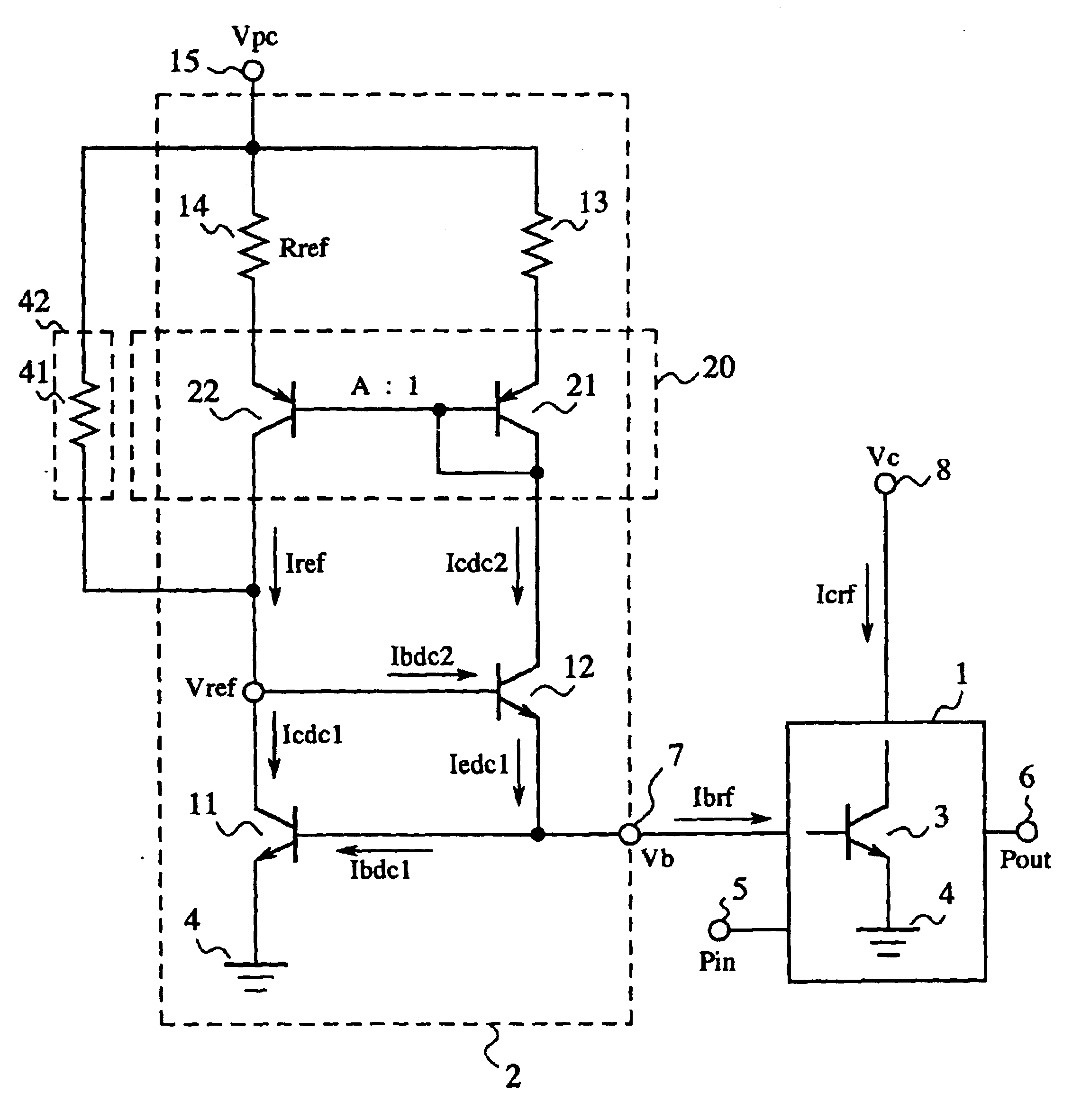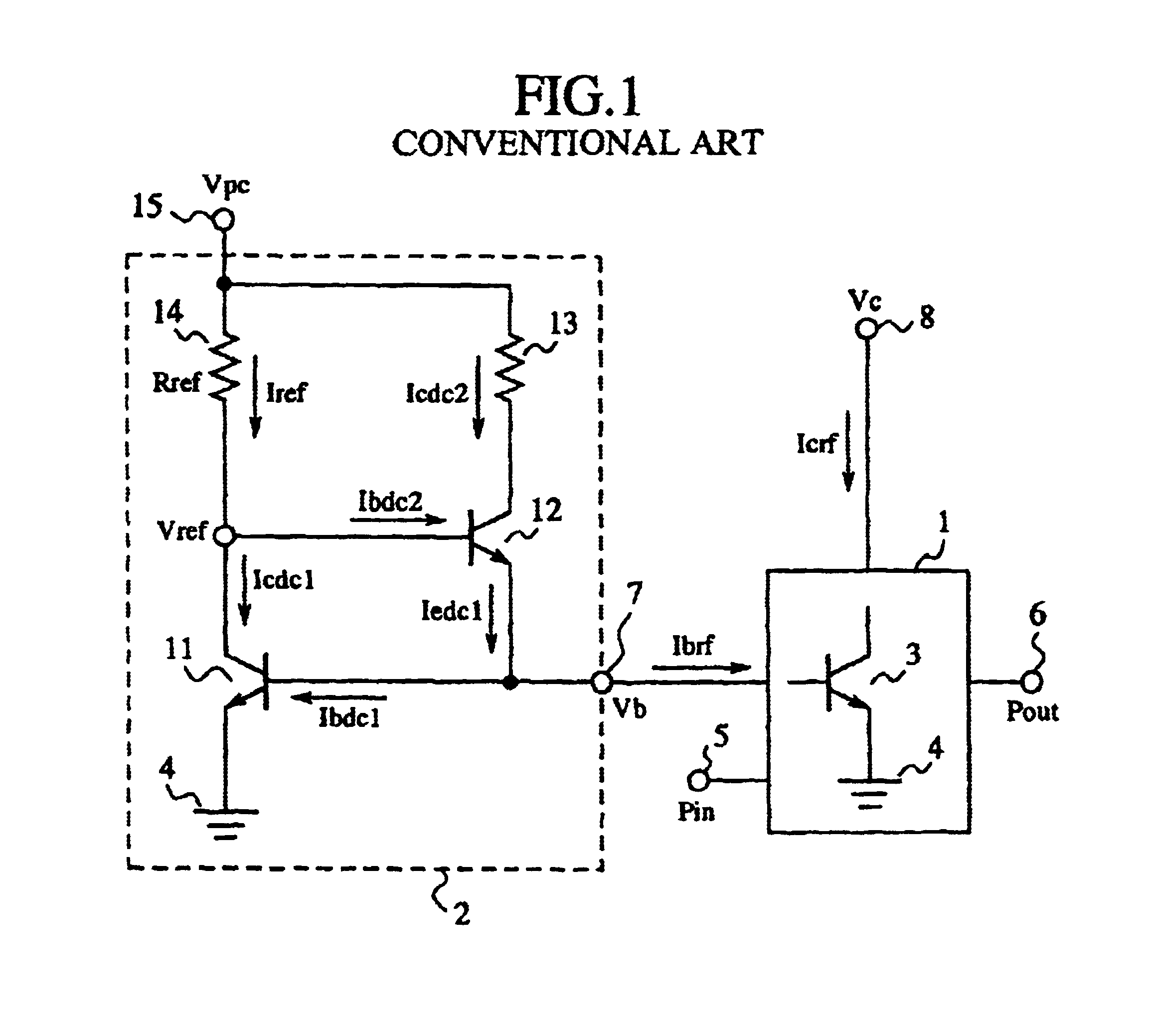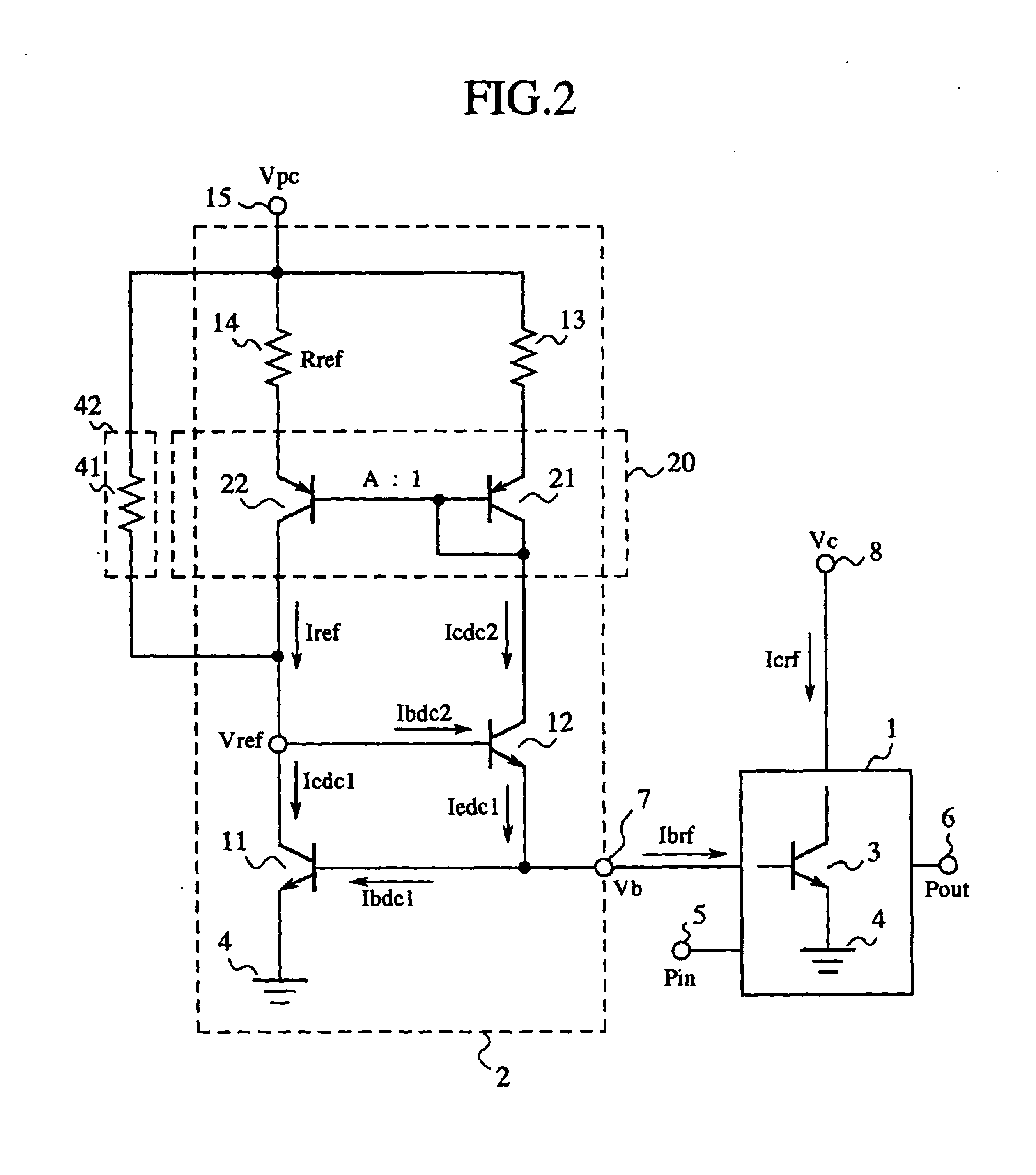High-frequency amplifier
a high-frequency amplifier and amplifier technology, applied in amplifiers, amplifiers with semiconductor devices only, amplifiers with semiconductor devices, etc., can solve the problems of reducing and reducing saturation output power and efficiency. , to achieve the effect of high power output and high efficiency
- Summary
- Abstract
- Description
- Claims
- Application Information
AI Technical Summary
Benefits of technology
Problems solved by technology
Method used
Image
Examples
embodiment 1
FIG. 2 is a circuit diagram illustrating a high frequency amplifying device according to the present invention, and in the figure, reference numeral 1 signifies a high frequency amplifier using an NPN bipolar transistor such as the BJT, HBT, or the like, as an amplifying element, and 2 signifies a constant voltage biasing circuit that supplies a base bias voltage to the high frequency amplifier 1.
In the high frequency amplifier 1, reference numeral 3 signifies an NPN bipolar transistor (a first NPN bipolar transistor) such as the BJT, HBT, or the like, 4 a ground connected to the emitter terminal of the NPN bipolar transistor 3, 5 a high frequency signal input terminal, 6 a high frequency signal output terminal, 7 a base bias terminal, 8 a collector bias terminal.
In the constant voltage biasing circuit 2, reference numeral 11 signifies an NPN bipolar transistor (a second NPN bipolar transistor) such as the BJT, HBT, or the like, which configures a current mirror circuit together wit...
embodiment 2
FIG. 3 is a circuit diagram illustrating a high frequency amplifying device according to the embodiment 2 of the present invention, and in the figure, reference numeral 30 signifies a current mirror that uses the collector current of an NPN bipolar transistor 12 as the reference current, and determines the collector current of an NPN bipolar transistor 11, and 31, 32 signify PMOS transistors (first and second PMOS transistors) that constitute the current mirror. In the current mirror, the gates of the PMOS transistors 31, 32 are connected to each other, the gate and drain terminals of the PMOS transistor 31 are commonly connected to the collector terminal of the NPN bipolar transistor 12, and the drain terminal of the PMOS transistor 32 is connected to the base terminal of the NPN bipolar transistor 12.
Further, the resistor (first resistor) 13 is connected between the source terminal of the PMOS transistor 31 and the power supply / voltage, setting terminal 15, the resistor (second re...
PUM
 Login to View More
Login to View More Abstract
Description
Claims
Application Information
 Login to View More
Login to View More - R&D
- Intellectual Property
- Life Sciences
- Materials
- Tech Scout
- Unparalleled Data Quality
- Higher Quality Content
- 60% Fewer Hallucinations
Browse by: Latest US Patents, China's latest patents, Technical Efficacy Thesaurus, Application Domain, Technology Topic, Popular Technical Reports.
© 2025 PatSnap. All rights reserved.Legal|Privacy policy|Modern Slavery Act Transparency Statement|Sitemap|About US| Contact US: help@patsnap.com



